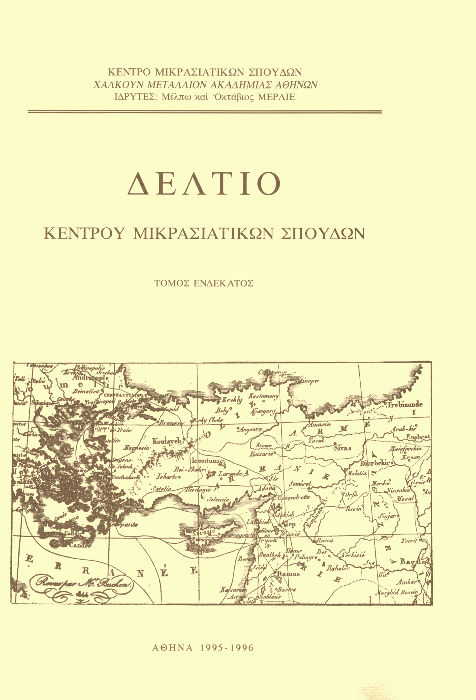The discovery, of a hellenistic polis in Karia (Bucakkoy, Syneta?)
Abstract
In the winter of 1995, an inscribed stele found near the village of Bucakköy in
Karia was transported to the Aphrodisias Museum. The stele is dedicated to Zeus
Synetenos by a priest and 121 other men (late 3rd or early 2nd cent. B.C.). The
epithet Synetenos belongs to a widespread type of Anatolian divine epithets,
which usually derive from place names. The village of Bucakköy has been known
as the possible site of a smal independent polis ever since the discovery of an
honorific inscription, built into the wall of the village mosque, in 1893. K.
Buresch (1895), J.G.C. Anderson (1897), and Jeanne and Louis Robert (1946)
recorded the presence of an ancient cemetery, a late Roman site, two inscriptions,
and a relief representation of a mother goddess, but were unable to find
evidence for the exact location or the name of the city. In light of the new
epigraphic find C. Ratté, L. Bier, and A. Chaniotis undertook an investigation,
which offered answers to both questions. A fragmentary inscription (3rd/2nd
cent.) was found built in the wall of a house in Bucakköy. It contains the last 9
lines of an honorific decree; in the hortatory formula, where one expects the
name of the community, we find a word beginning with the letters SY, obviously
the ethnic name Synetenoi. This confirms the assumption that the city’s name
was Syneta (cf. other indigenous names, such as Anineta, Azita, etc.). The city
itself was discovered at the hilltop site of Tola§ Tepe, where the dedicatory inscription
was found. This polis, in the eastern end of the Maeander valley and at the
border of Phrygia and Karia, may have been founded by the Seleucids (late 3rd
cent.) or the Attalids (early 2nd cent.). The rich onomastic material indicates that
its population consisted of settlers from the coastal cities of Ionia. It is an
attractive assumption - in the light of the small size of the settlement, the fact that
the dedicatory inscription does not give any information about the identity of the
122 dedicators, and the fact that only a few men seem to have family relations
with one another - that these men were the first settlers.
Article Details
- How to Cite
-
Χανιώτης Ά. (1997). The discovery, of a hellenistic polis in Karia (Bucakkoy, Syneta?). Bulletin of the Centre for Asia Minor Studies, 12, 13–29. https://doi.org/10.12681/deltiokms.72
- Issue
- Vol. 12 (1997)
- Section
- Articles

This work is licensed under a Creative Commons Attribution-NonCommercial-ShareAlike 4.0 International License.
Authors who publish with this journal agree to the following terms:
- Authors retain copyright and grant the journal right of first publication with the work simultaneously licensed under a Creative Commons Attribution Non-Commercial License that allows others to share the work with an acknowledgement of the work's authorship and initial publication in this journal.
- Authors are able to enter into separate, additional contractual arrangements for the non-exclusive distribution of the journal's published version of the work (e.g. post it to an institutional repository or publish it in a book), with an acknowledgement of its initial publication in this journal.
- Authors are permitted and encouraged to post their work online (preferably in institutional repositories or on their website) prior to and during the submission process, as it can lead to productive exchanges, as well as earlier and greater citation of published work (See The Effect of Open Access).




